What is Gorilla Trekking in Rwanda?
The answer to this question is simple. Gorilla trekking in Rwanda is one the most profound wildlife experiences in the world. You begin on the edge of a volcano and then enter the dense forest, hiking toward the summit. All the while, you and your guides scan the brush for telltale signs of one of the most majestic creatures on Earth. The mountain gorilla of Rwanda.
Through heat and fatigue you push on, no longer an observer of this beautiful natural world, but a part of it. You become attuned to nature in ways you never thought possible. The sound of wind through the trees. The way the mountain grade feels beneath your foot. The smell of the forest. The further up the mountain you go, the further away from civilization you get until you are immersed in the mountainside. This is when the encounter happens.
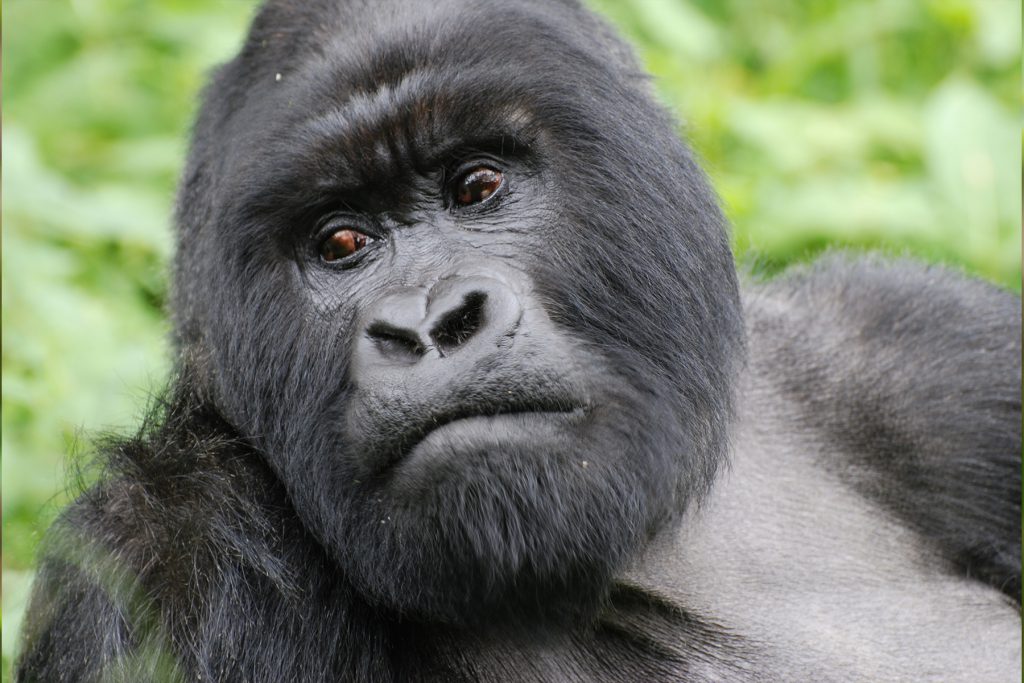
What is such an encounter like? Our very own Linda Swain says of trekking for mountain gorillas of Rwanda that, “I can confirm that after a combined 400 or so safari experiences across the African continent, our gorilla trekking adventure was second to none. For Ian and I, the trek was as emotional of an encounter as we have ever experienced in travel.” Simply put, gorilla trekking in Rwanda is an experience that will touch you in ways others cannot. Life-changing and unforgettable, to trek is to step into the world of Rwandan mountain gorillas, a world free from bars, gates, and glass. It is the ultimate in wildlife experiences.
“They [gorillas] are brave and loyal. They help each other. They rival elephants as parents and whales for gentleness. They play and have humor and they harm nothing. They are what we should be. I don’t know if we’ll ever get there.” – Pat Derby, animal rights activist
Where Does Gorilla Trekking Take Place?
Rwandan mountain gorillas reside on the striking volcanoes found in Parc National des Volcans. Half of the world’s mountain gorilla population lives within Volcanoes National Park, as it is referred to in English. Incorporating five of the eight volcanoes that comprise the Virunga Mountains, the park is a marvel of biodiversity. Lush, verdant, and part of the renowned Albertine Rift, this natural habitat is fitting backdrop to trek as you search for mountain gorillas.
What’s more, Volcanoes National Park is where the study of Rwandan mountain gorillas began. Famed primatologist Dian Fossey made the park the base of her studies and founded the Karisoke Research Foundation in Rwanda’s Volcanoes National Park to further the study of mountain gorillas. The park would go on to be immortalized in the film “Gorillas in the Mist,” a film based on the life Dr. Fossey and her crusade against poaching.
But the park is not only home to mountain gorillas. Golden monkeys, buffalo, forest elephants, giant forest hogs—Africa’s largest swine, bushbucks, black-fronted duikers, spotted hyenas, and hundreds of bird species also reside in the forests of the park. Additionally, the altitude of the park, ranging from 8,200 to nearly 15,000, lends itself to massive bamboo forests as well as some of the only remaining forest habitat of the afro-montane variety in the world.
Why is Gorilla Trekking Expensive?
Gorilla trekking in Rwanda is an expensive endeavor for good reason as it ensures the safety and well-being of the mountain gorilla as a species. Unfortunately, mountain gorillas are a critically endangered species. With less than 1000 gorillas split between two isolated populations, extinction of the entire species was and continues to be a real possibility. Because of this, permits to trek for the gorillas are limited which increases the demand and, consequently, the price of each permit. These limits exist to decrease exposure to humans and reduce the chances of further harm to the species. For example, did you know that the mountain gorilla shares 98% of it’s DNA with humans? This makes it susceptible to diseases carried by humans into the gorilla’s natural habitat.
Another reason for the high cost of gorilla permits is the use of the proceeds to establish conservation practices that benefit the species. Only a few decades ago, the Rwandan mountain gorillas were nearly poached out of existence. The deforestation of the surrounding region also further diminished the population. But as Nigel Richardson observes in his fantastic piece on the conservation of Rwandan gorillas, significant progress has been made due to tourism that has brought much needed funding to support this incredible animal.
The Rwanda Development Board employs people to monitor and study the mountain gorillas. Through charting behavior, movement, and eating habits, the board has been able to better track the overall health of the gorilla population. Moreover, through funding made possible with tourism dollars, the board is able to staff armed park rangers who protect the mountain gorillas against poachers and rebel groups.
Is Gorilla Trekking Safe?
While there is always an element of risk in dealing with a wild animal, gorilla trekking is generally a safe activity as long as you follow some simple guidelines:
- Travel with guides and armed rangers
Experienced guides will never put you in harms way. They know these gorillas and the land. Listen to them. Armed rangers are present not to shoot the gorillas but rather to scare them off with warning shots should an issue occur.
- Only trek when healthy
As mentioned before, gorillas are susceptible to human diseases. The flu and common cold can prove to be fatal for this endangered species. And, alternatively, trekkers with a weak immune system can also contract diseases from gorillas. If you are sick, wait until you are healthy to go on your trek.
- Maintain a safe distance
When encountering mountain gorillas, keep a distance of 25 feet between yourself and the nearest gorilla. This reduces the chances of a close encounter which could prove dangerous for both parties. When approached too closely, gorillas will charge. Keep a safe distance and you will prevent this from happening.
- Avoid direct eye contact, hands to yourself
Rwandan mountain gorillas are timid by nature. Generally, they are not bothered by travelers as long as their space and their eyeline is respected. As such, do not stare them directly in the eyes. This is an invitation for the gorilla to charge. Also, keep your voice down and your hands to yourself should a gorilla tread too close. And never touch a baby gorilla as that will be construed as a threat.
What Do You Wear On A Gorilla Trek?
To be clear, gorilla trekking should not be thought of as a leisurely activity. Trekking is a physically taxing endeavor. Remember, you are not venturing into the zoo but rather into a natural habitat. For this reason alone, you must dress the part. Here are some essential pieces of clothing and outerwear that we strongly consider you wear on your trek, starting from your head and ending at your toes:
- A Hat!
It rains often in the higher elevations of the Volcanoes National Park making headwear a necessity. A wide brimmed hat provides necessary protection against not only raindrops, but the sunshine that comes after the mist has burned off the mountain for the day. Trust us, it is a good investment.
- Long Pants, Long Sleeves
Much like a wide brimmed hat, long pants and long sleeves provide you with ample coverage. Long sleeved shirts will protect against scratches from thorns, branches, and Nettles, a plant that grows sharp hairs on its leaves. Long pants provide the same protection but also allow you to tuck your pantlegs into your socks which prevents fire ants from biting any exposed skin.
- Light, Waterproof Jacket
As mentioned before, damp weather is common in the habitat of the Rwanda mountain gorilla. A light rain jacket is perfect when dealing with wet weather in that it will keep you dry but won’t make you sweat—you will be doing plenty of that on your own accord. Another advantage of a light jacket is that it can easily be folded up. Additionally, bring a sweater along for chilly mornings and evenings.
- Waterproof Hiking Boots
In the higher elevations of Volcanoes National Park, rain is a common occurrence and it is almost always wet. The trails on which you will hike will be rugged terrain requiring footwear that provides you traction, stability, and, most importantly, ankle support. Additionally, thick socks should be worn as supplemental protection.
- Pack Insect Repellent and Gloves
Bring along a day pack to store your sweater and rain jacket, as well as insect repellent and gloves. Insect repellent is necessary to ward off flies, mosquitos, and ants, while simple gardening gloves will protect your hands against the elements and the terrain.
Check out our Swain Destinations Travel Store for the latest packing items and gear for Gorilla Trekking.
Rwandan Communities and Mountain Gorillas
What is a happening in Rwanda is truly remarkable. Two communities, one human and one primate, are sustaining each other. This relationship between Rwandans and their mountain gorillas has forged a special bond that strengthens with each passing day. Dr. Kirstin Johnson noted this bountiful relationship, writing for the Independent that, “10 per cent of earnings from gorilla tourism in Rwanda are funneled back into the local community to support shared social services, infrastructure development, employment, community engagement, empowerment, and livelihood development.” With continued growth forecast for Rwanda’s tourism sector, both communities will continue to benefit from one another.
Yet, the special bond goes far beyond dollars and cents. The Rwandan communities have adopted the mountain gorillas as an extension of their own family. As our very own Linda Swain observed during her own Rwandan gorilla trekking adventure, “… the communities keep them involved in conserving the population, even participating in naming the gorilla babies. Their involvement is key to the stability of the gorilla’s existence.” Indeed. Rwanda is a classic example of each stakeholder benefitting from the other’s success. It also represents a business model which can be replicated across Africa to better serve communities in need and wildlife species at the tipping point.
Our Partners and Our Trekking Trips
Swain Destinations is proud to partner with suppliers that not only provide once-in-lifetime experiences to our clients, but also do so in an environmentally responsible way. Look no further than our friends at Singita Kwitonda Lodge. Positioned on the edge of Rwanda’s Volcanoes National Park, Kwitonda Lodge is an ideal basecamp from which to launch your gorilla trek. Even better, the lodge was designed with conservation in mind and contributes to the long-term project of reforestation, thereby increasing the mountain gorilla’s habitat.
Our own Ian Swain II wrote of his gorilla trekking experience that, “it was a sobering experience. These creatures, facing the threat of extinction, are not that much different than us.” This realization is what we strive for when promoting gorilla trekking in Rwanda. We have several itineraries that include this life-changing experience but none more focused on gorilla trekking than our five-night Gorilla Trekking in Rwanda itinerary. If a stay in Kwitonda Lodge before embarking on two days of gorilla trekking interests you, then this itinerary is for you.
We believe that to travel is to grow because when you travel you experience things that expand your world. Gorilla trekking is one such activity that expands your world and the understanding of it. An immersive experience that permits you to become a part of the natural world for a brief time, it is way to reconnect with who we are as human beings. That is why gorilla trekking in Rwanda is special. It will change you in ways that you never thought possible—for the better.
Start Planning your Gorilla Trekking adventure to Rwanda today. Click here to contact one of our Swain Destinations Travel Consultants.

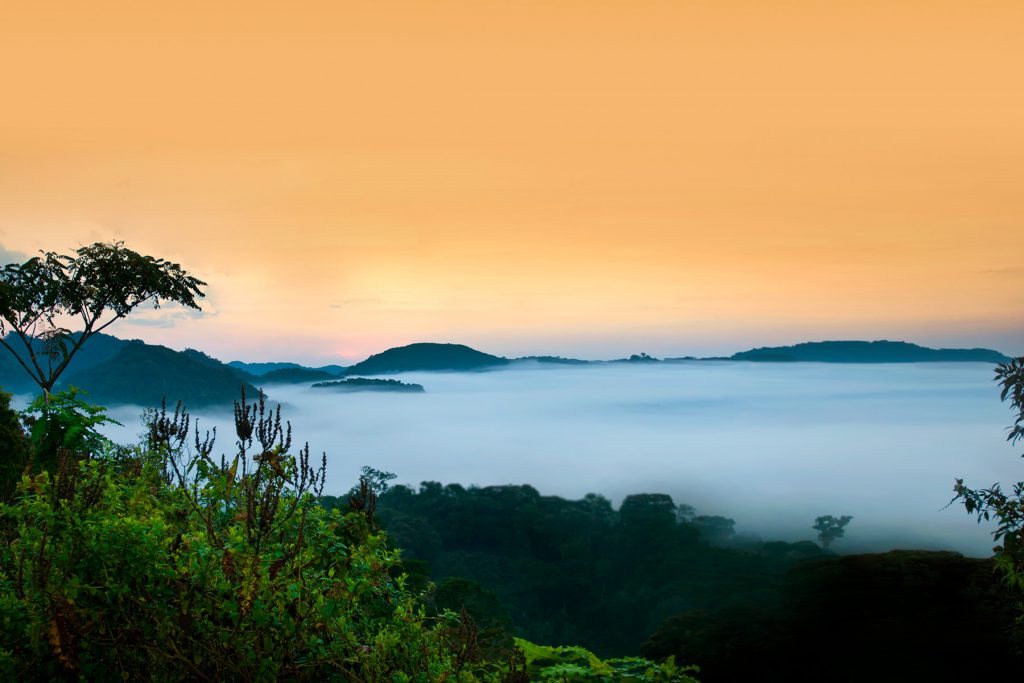
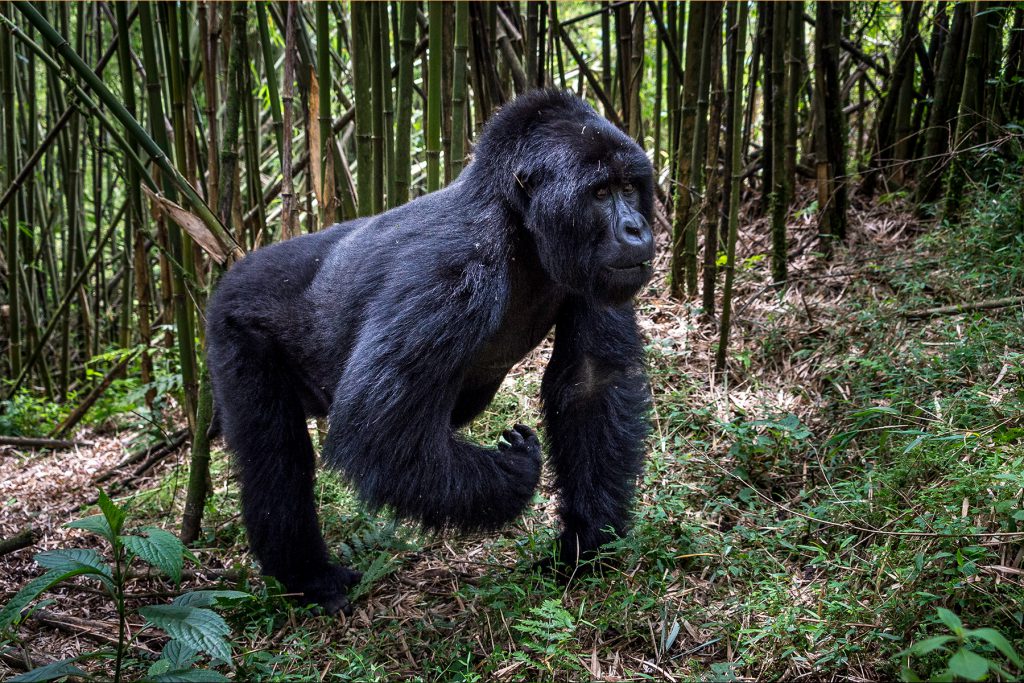
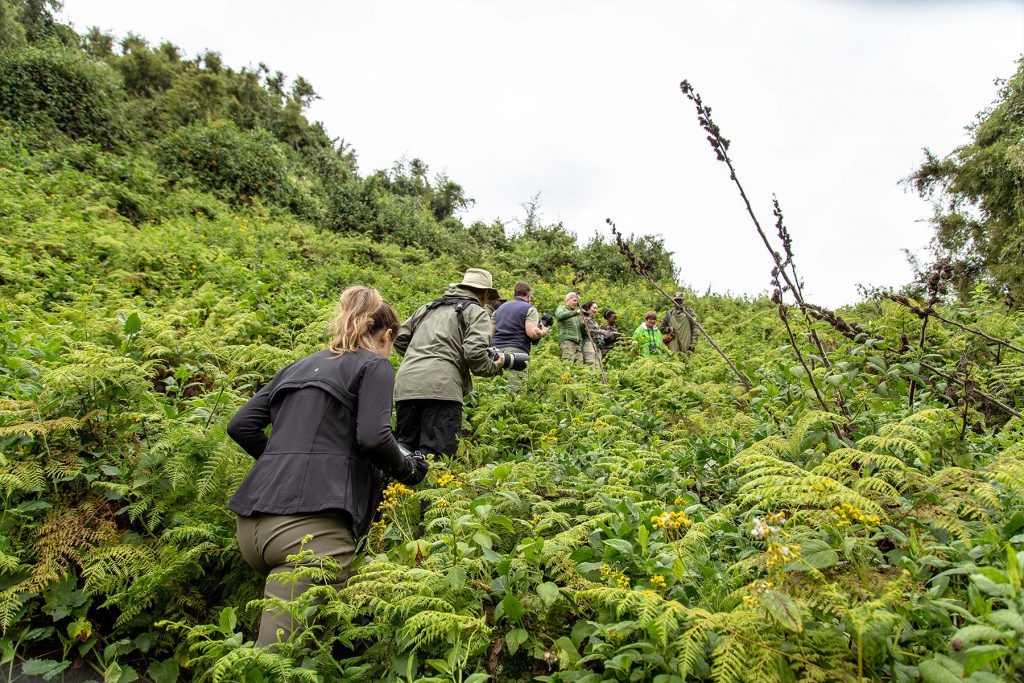
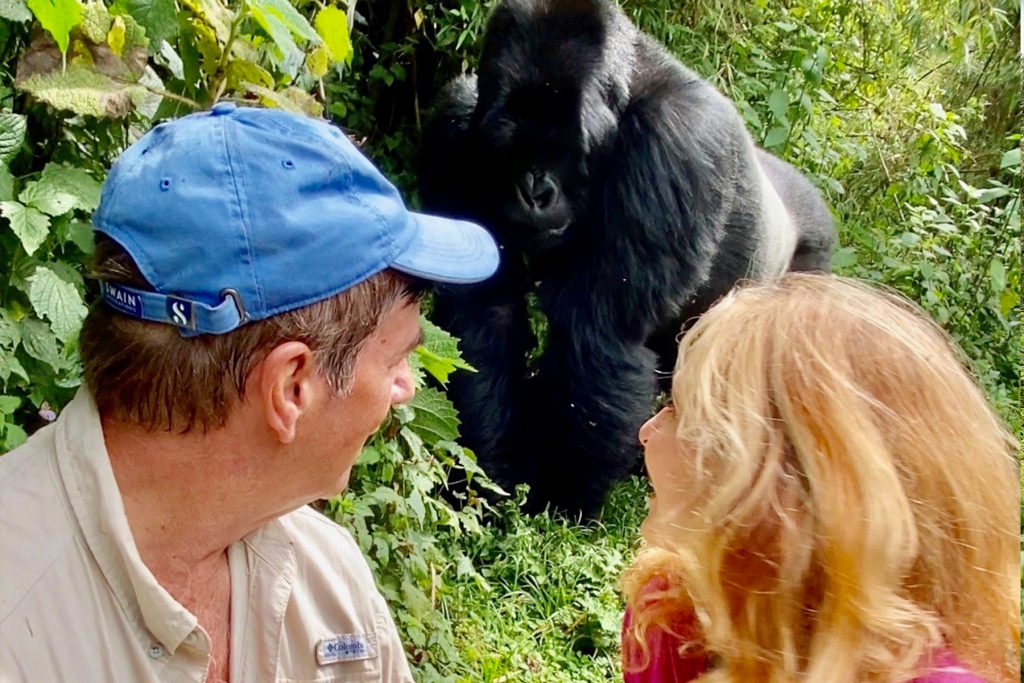
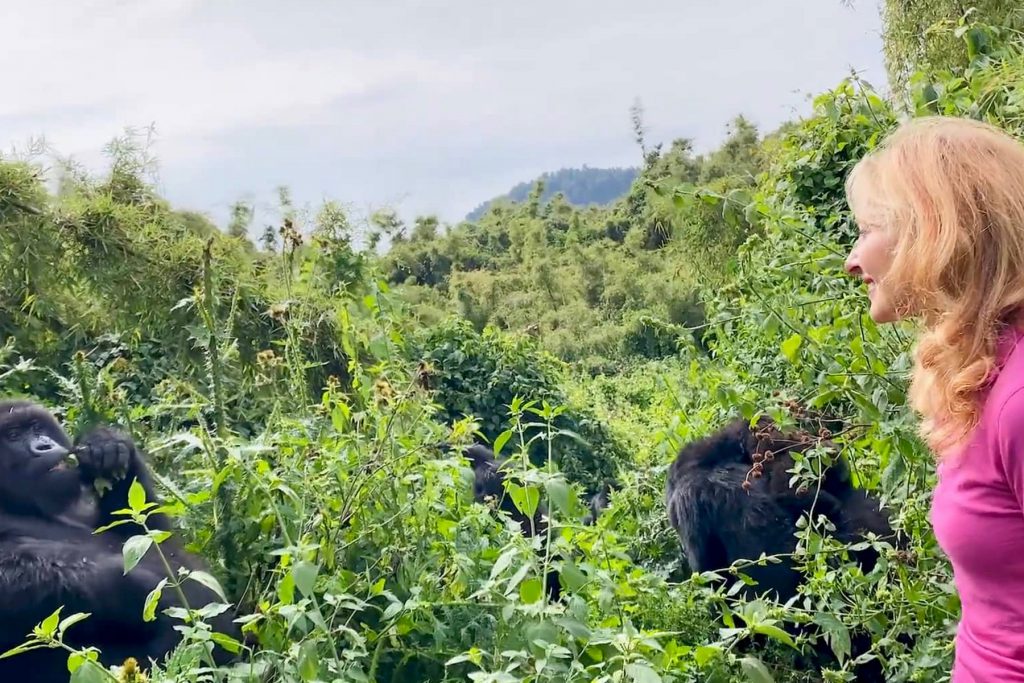
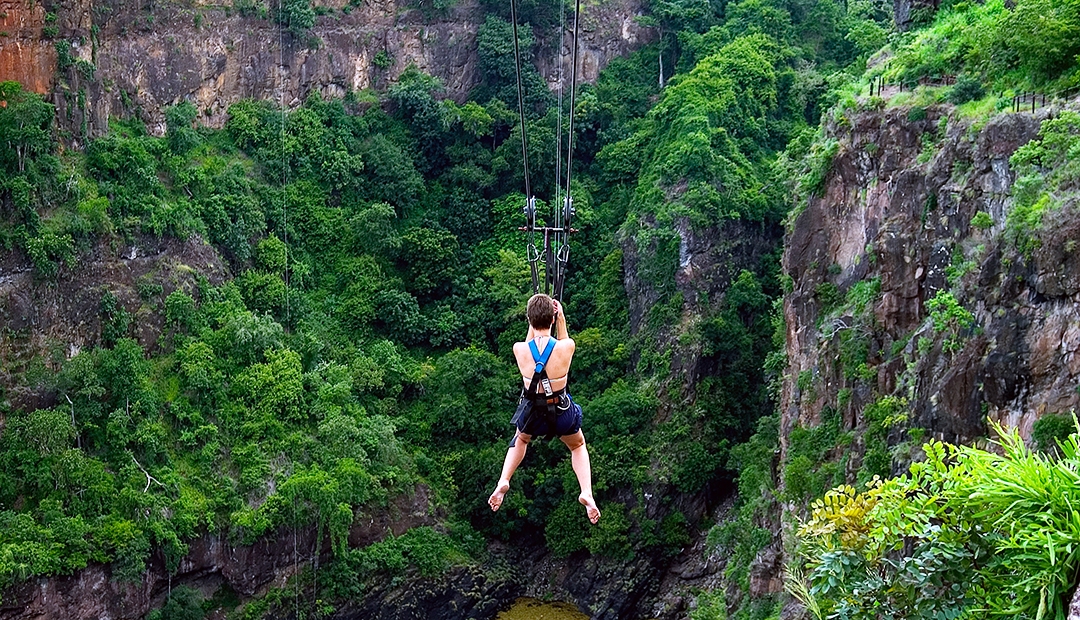
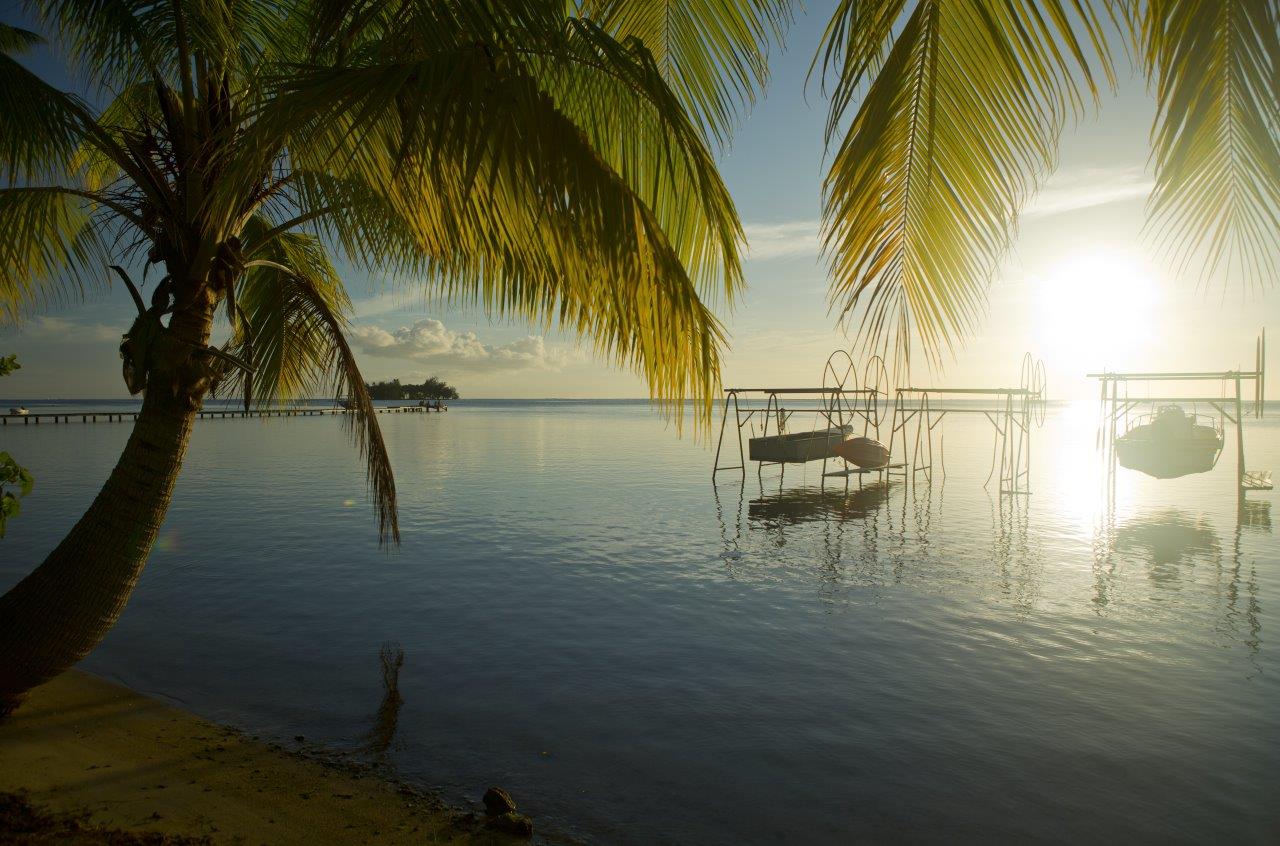
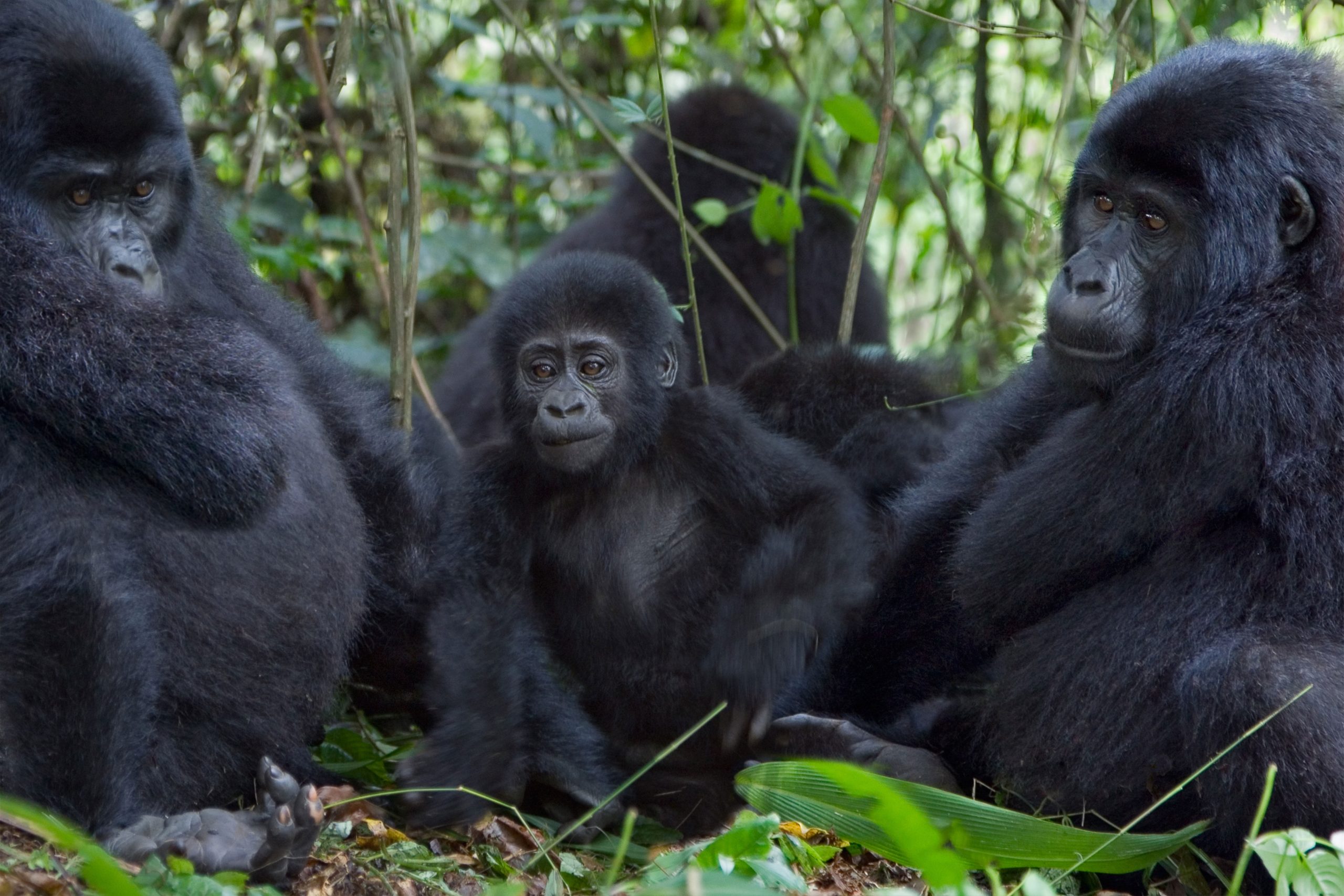
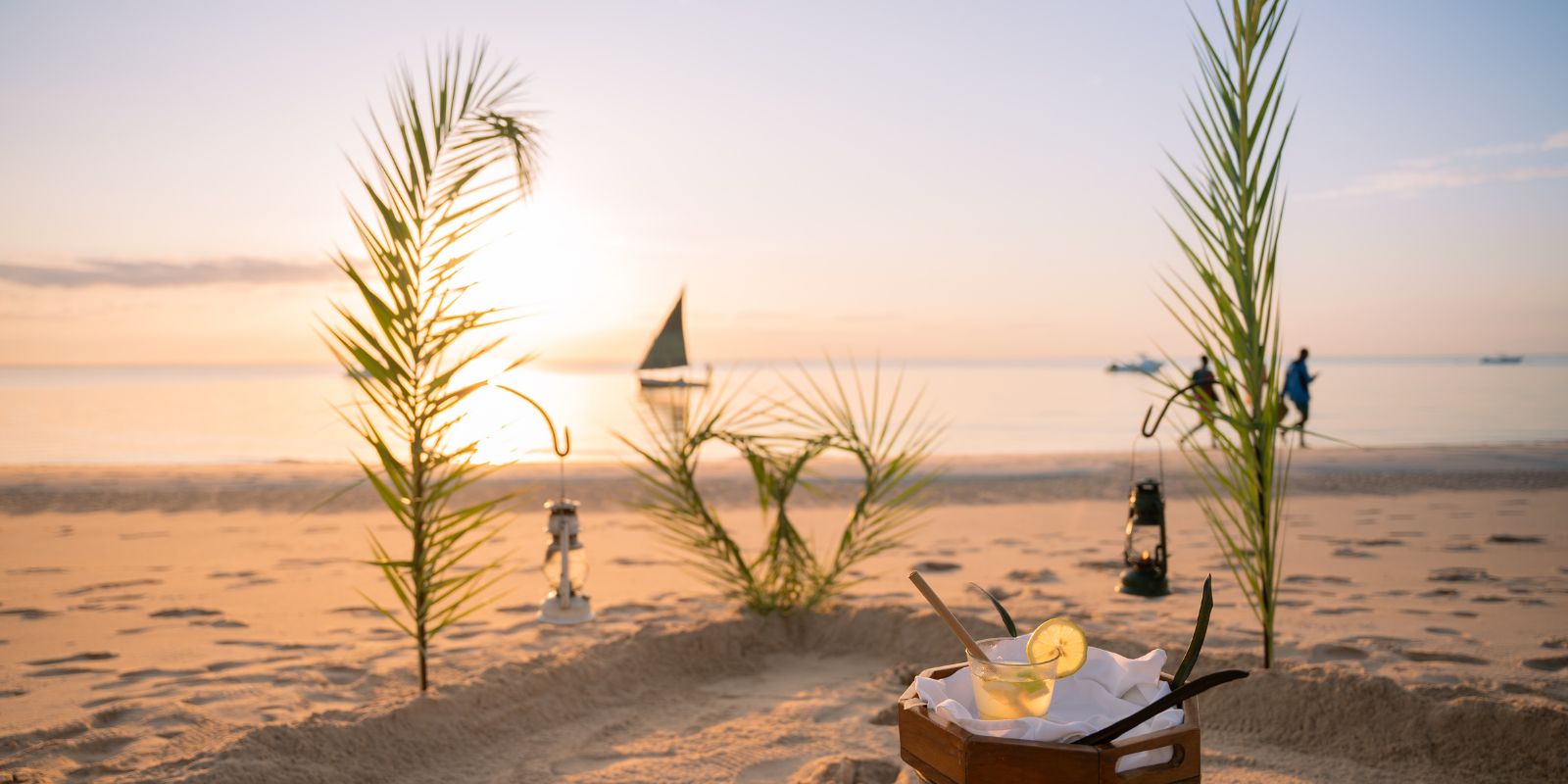
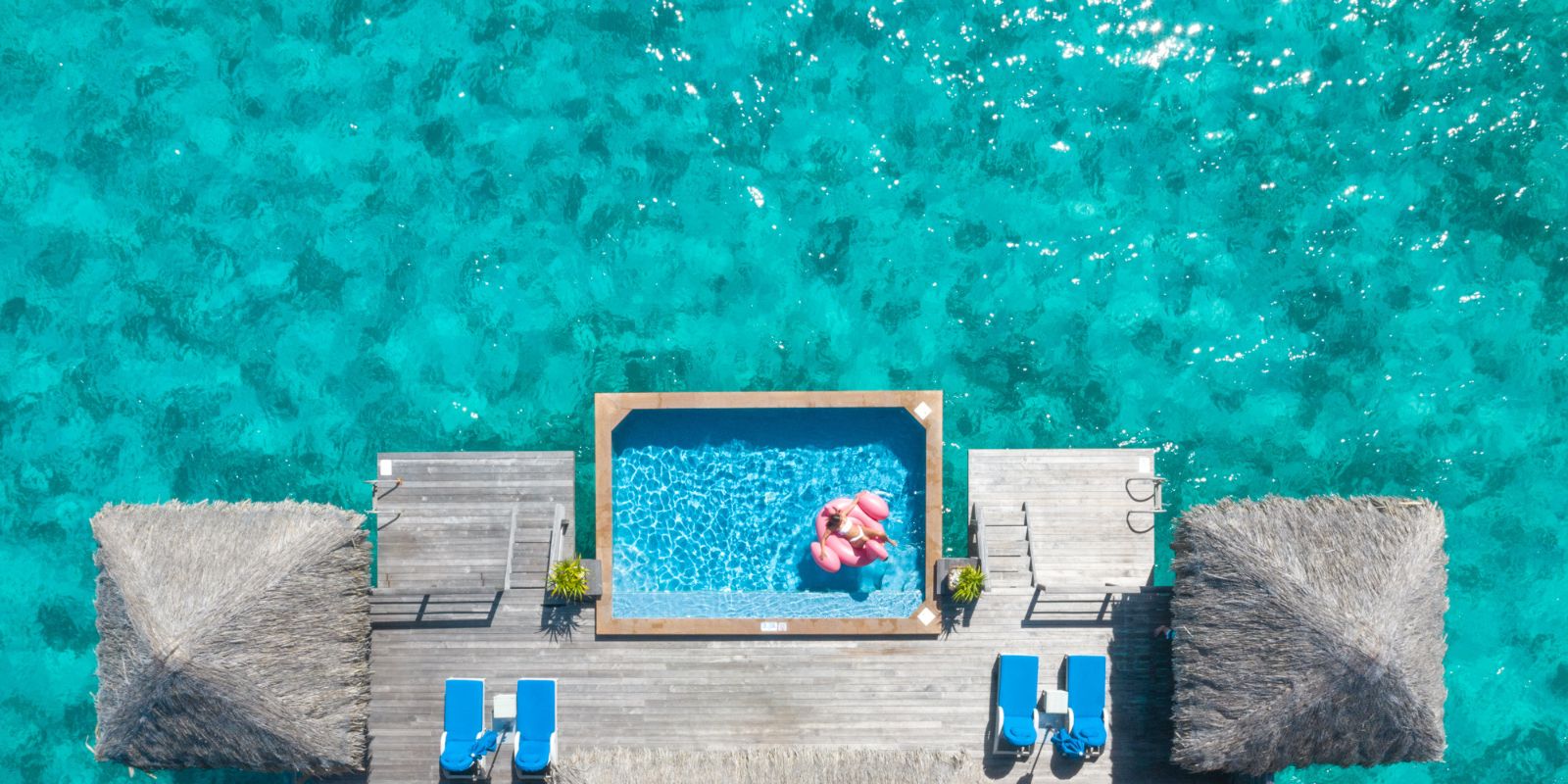
no comment